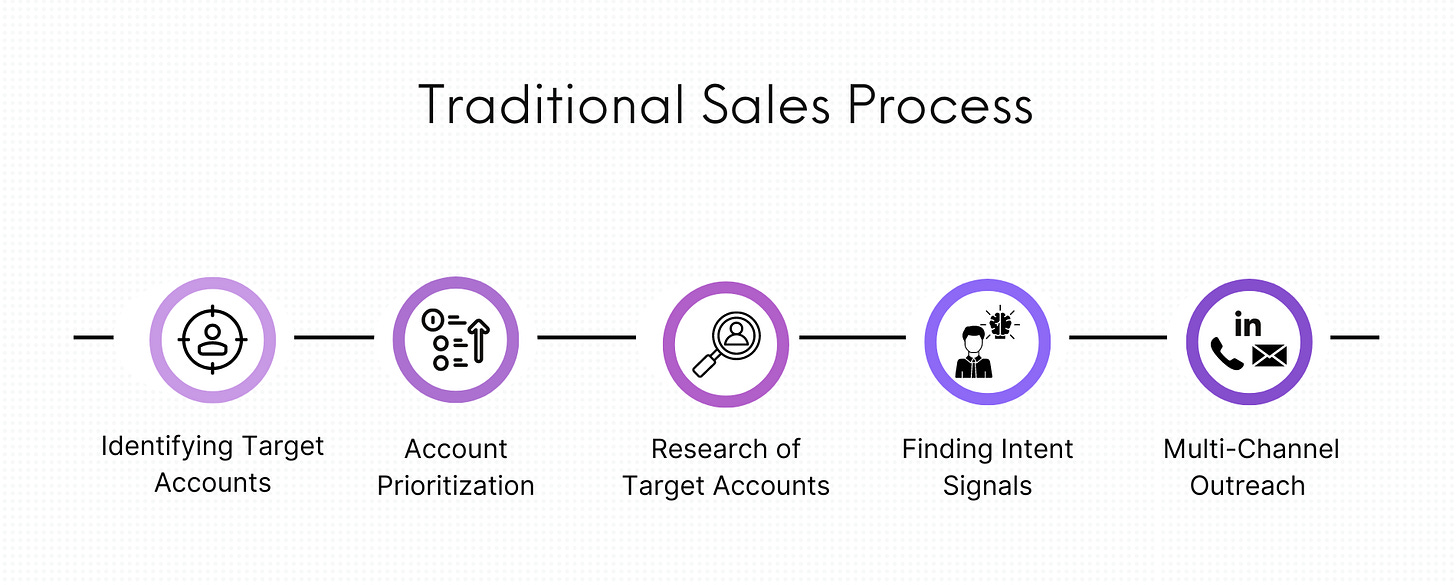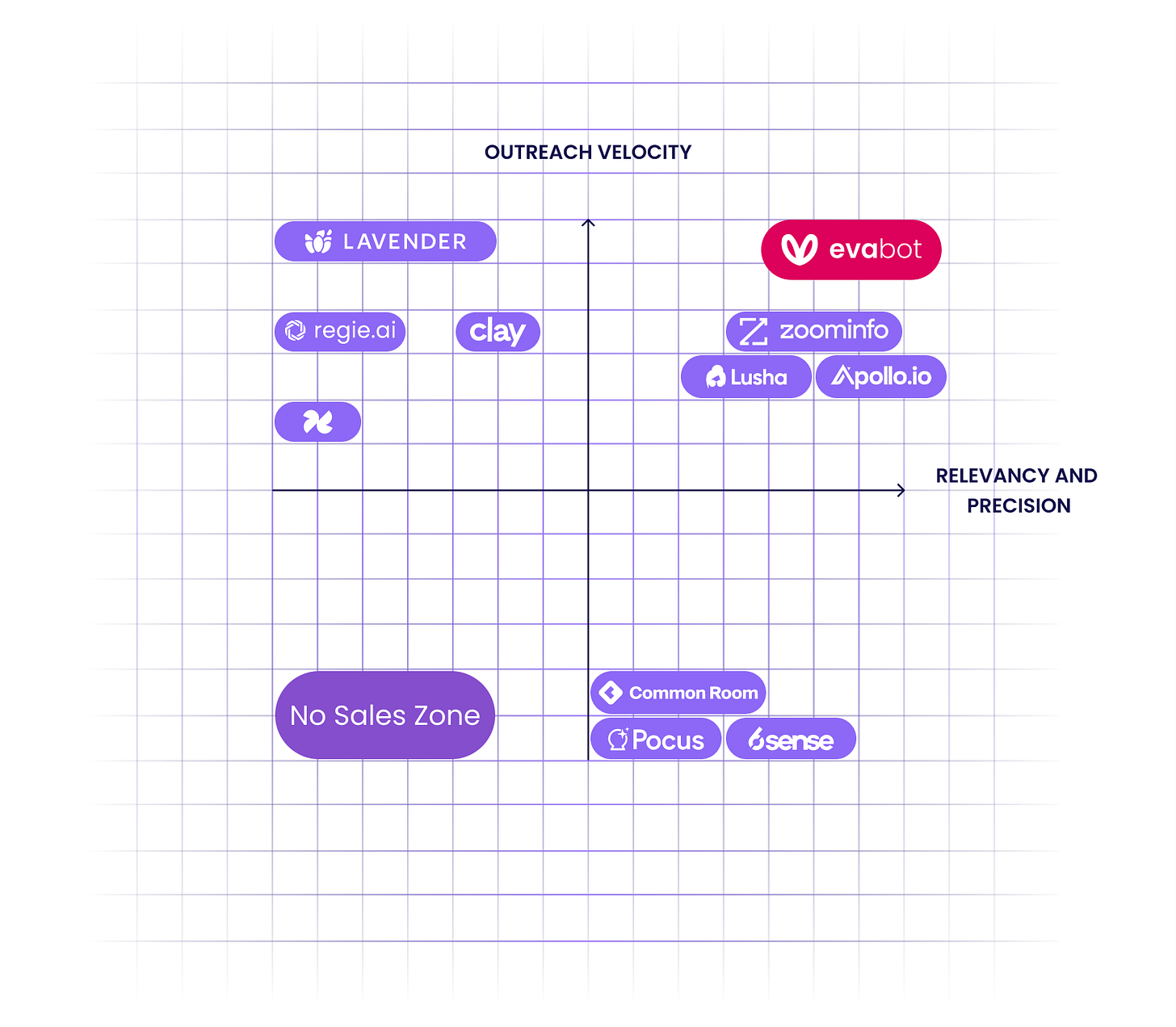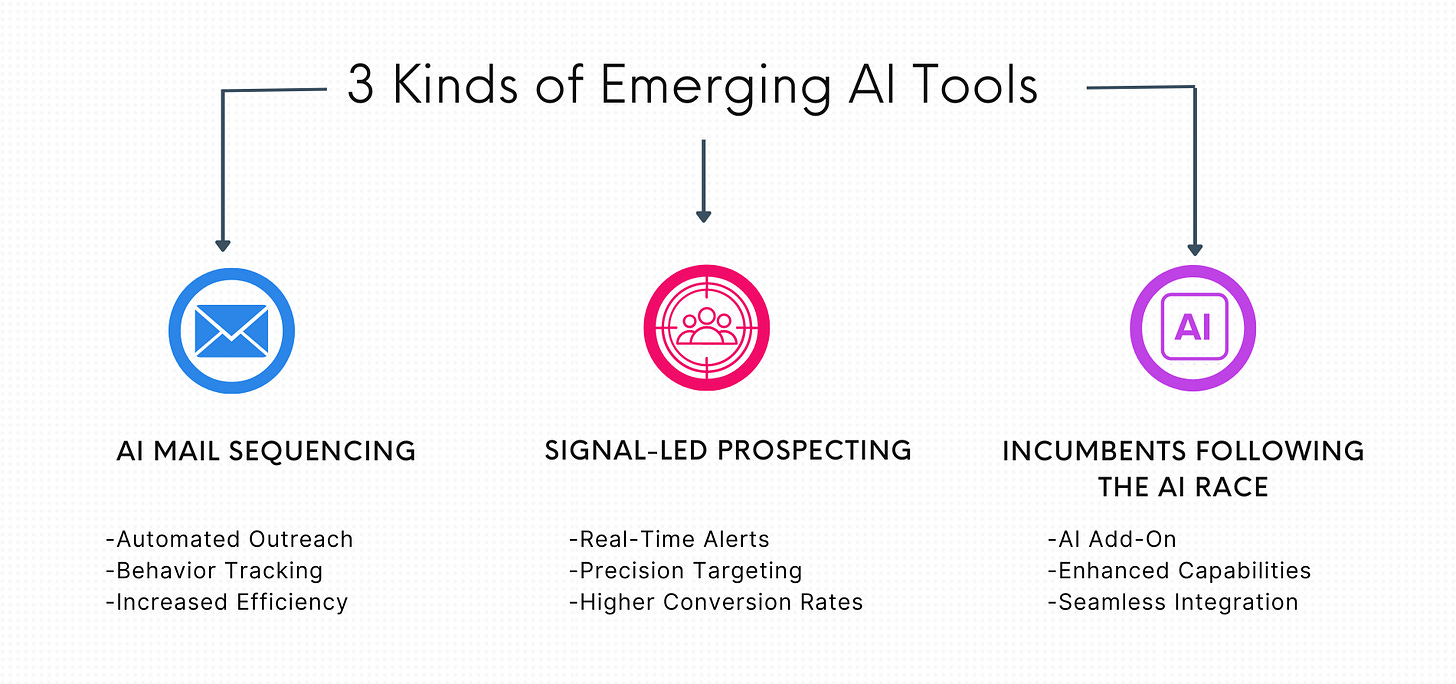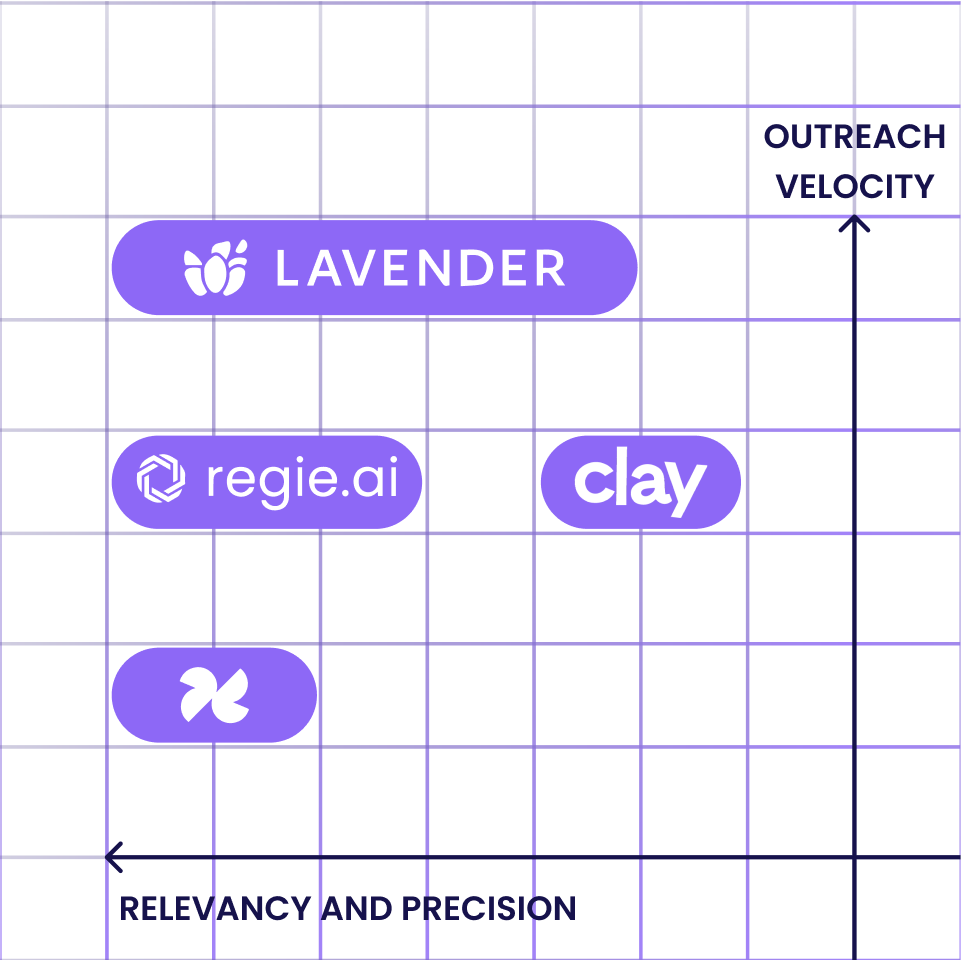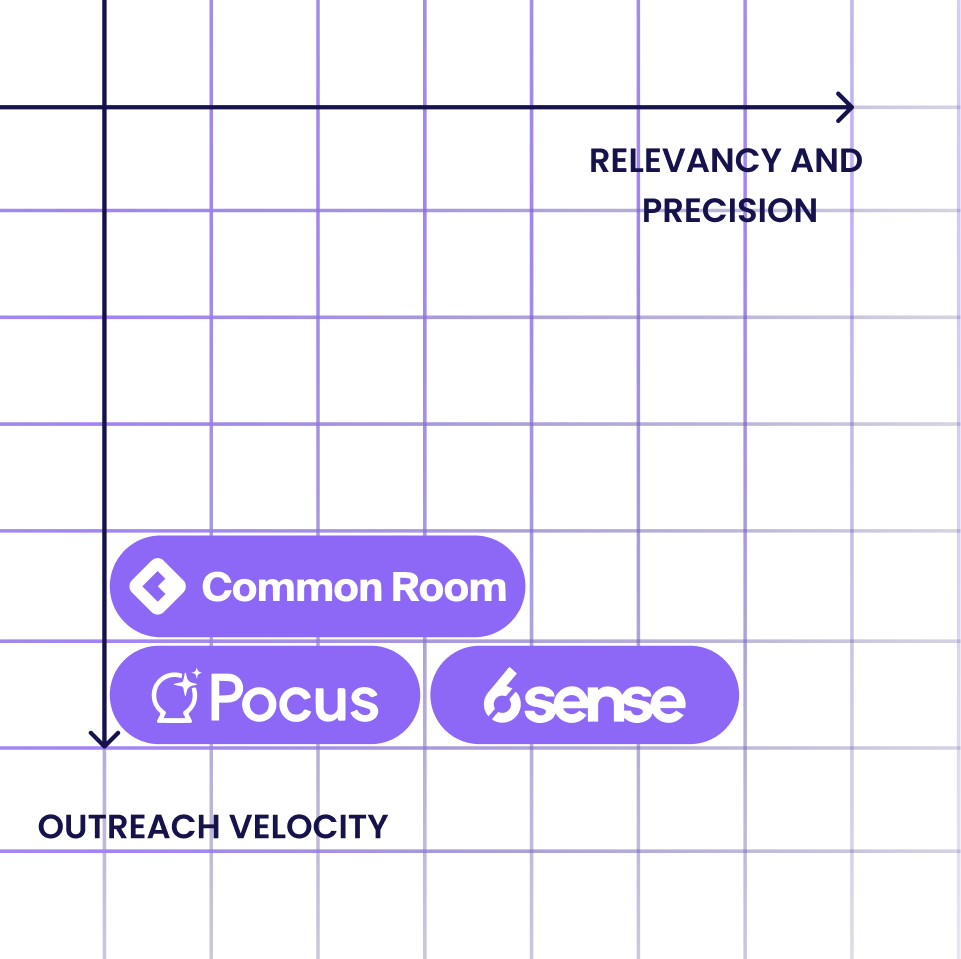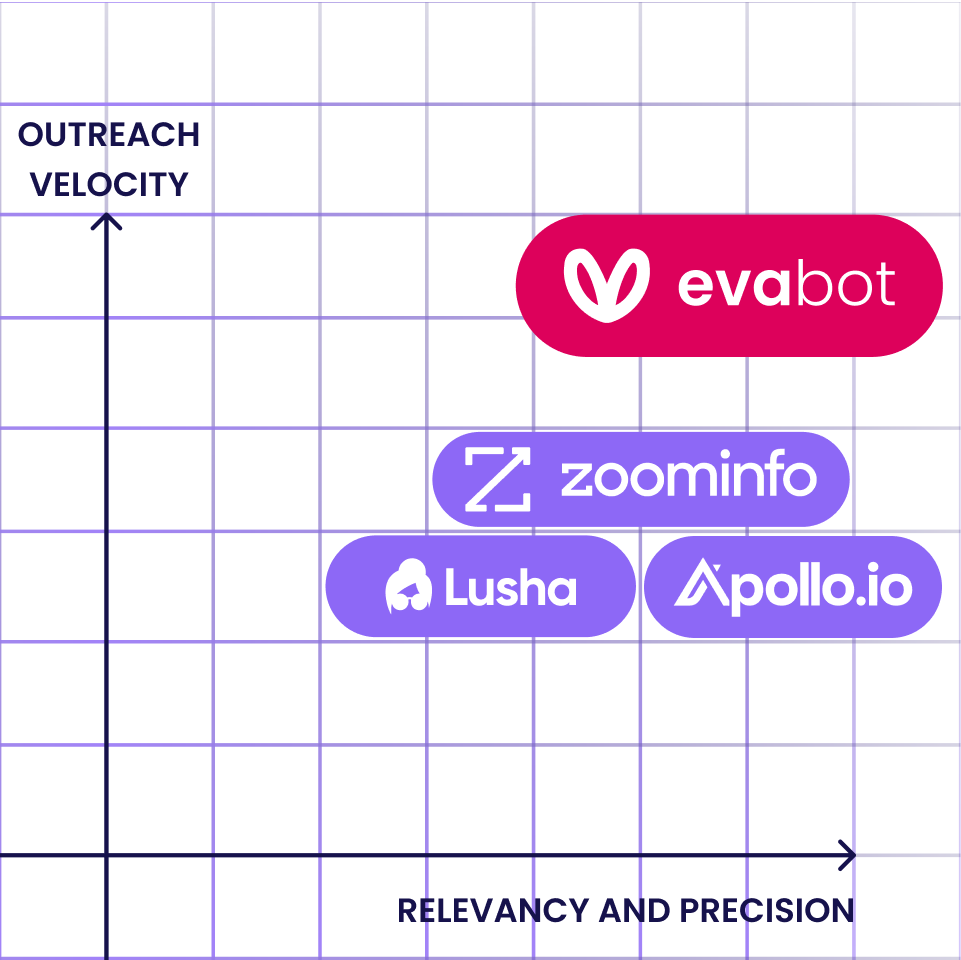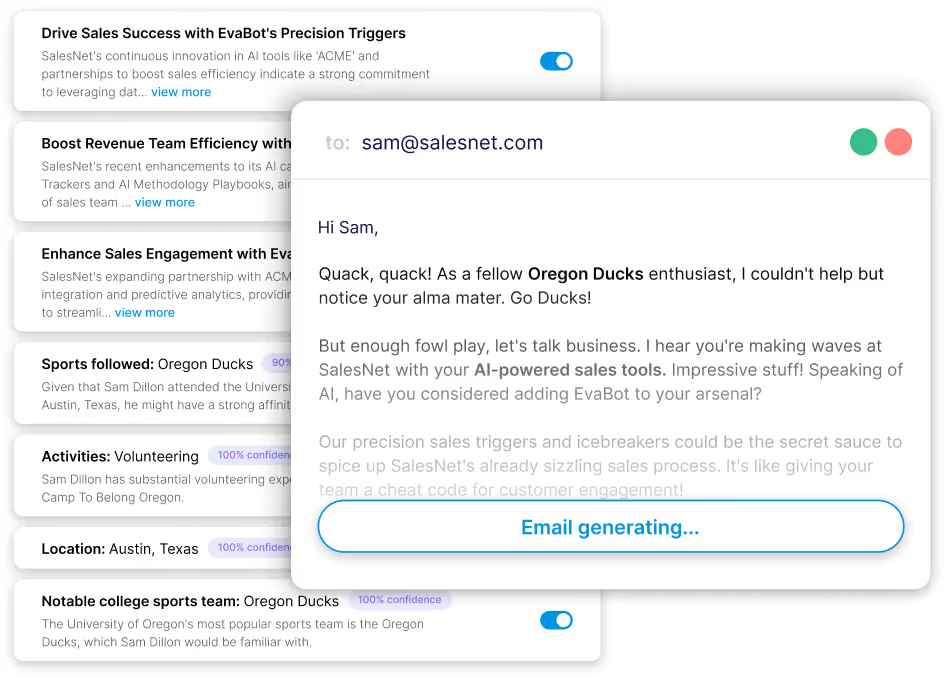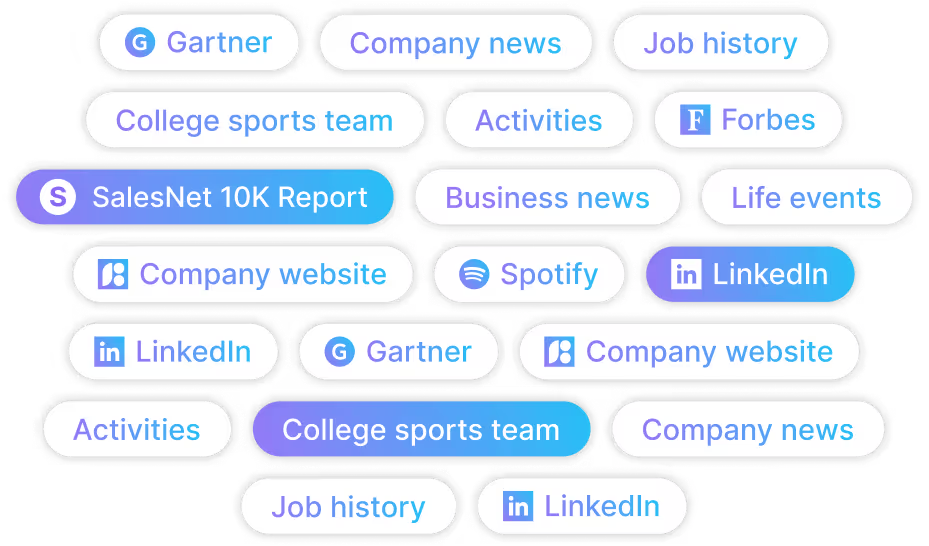Sales AI Landscape - What is working and what isn't?
Discover emerging AI tools, their impact on sales processes, and actionable insights for optimizing outreach. Learn how these sales AI platforms enhance relevance, precision, and conversion rates.
Over the last 6 months, we’ve been writing about the “Future of Prospecting” and have conducted 7 expert webinars on topics related to Sales Quota, LinkedIn Outreach, Sales AI, Outbound 2.0, Cold Calling, and more.
One theme has been common across all conversations so far:
“What’s the lay of the land?”
In this newsletter, we’re going to cover the “Sales AI Landscape.”
The sales process used to be a well-oiled machine, focusing on predictable conversions.
Here are the key steps that every sales team has followed so far...
1. Identifying Target Accounts
2. Account Prioritization
3. Research of Target Accounts
4. Finding Intent Signals
5. Multi-Channel Outreach
As we are adopting AI in sales, some questions are continuously discussed in webinars and meetings.
Let’s look at these questions and see what are the indicative preferences…
1. How can we do targeted outreach with pain-based insights?
We all know that cutting through the noise is harder than ever. But how do we make sure our outreach is not just another message in the clutter?
The key is targeting prospects with pain-based insights—focusing on the challenges they’re facing right now.
New Approach:
- Identify the specific pains and issues prospects are grappling with.
- Hyper-personalize your outreach across multiple channels to address these pains directly.
"We’ve seen more than 20% increase in response rates when we focus on the prospect’s pain in messaging rather than talking about value proposition”.
2. Is Account Prioritization based on Intent Signals still relevant?
Account prioritization is important, but here’s the problem:
“Everyone’s doing it with Intent Signals.”
Sales teams are bombarding in-market accounts with ads, emails, and calls. The noise level is off the charts.
It’s getting harder and harder …
New Approach:
- Have a tool that identifies prospect’s pain points and business preferences to prioritize target accounts.
3. Are the sales tools optimizing a process or committing to an increased outcome?
All the tools that promise to optimize our sales processes, how effective are they in driving outcomes? Or are they just making us faster at doing the same old things?
New Approach:
- We need to measure whether tools are improving actual sales outcomes.
- We need to prioritize tools that promise concrete, measurable improvements.
4. How much time is our team spending on identifying prospect pains?
Sales reps spend too much time researching the accounts and identifying prospects' pain points. It’s crucial to address this, as this time would rather be saved in building relationships.
New Approach:
- Track the time spent on pain discovery vs. actual selling.
- Invest in understanding the prospect to build long-term relationships.
5. How can we personalize calls when we don’t know who’s picking up?
Power dialers are great for calling efficiency, but they’re a challenge when it comes to personalization. Sales rep doesn’t know who is going to pick the call and thus resort to a generic call script.
New Approach:
- Have a tool that does account research on all accounts before dialing with power dialers.
- Have a tool that creates customized scripts (as per research) and integrates with power dialers to show when a prospect picks the call.
These are the questions that keep sales leaders up at night. They’re not just theoretical; they’re real challenges that need practical solutions. Sales AI might just hold the key to unlocking these answers, but the journey to figuring it all out is just beginning.
What is the deciding factor now… Process Improvement or Outcomes?
The big question now isn't just about improving processes anymore—it's about driving outcomes.
With the abundance of AI tools in the market, the focus has shifted.
Sales leaders are now asking, “Which tool can accelerate my results?” rather than just, “Which tool can help me improve my process?”
It’s no longer enough to be efficient; you have to be effective.
When we talk about accelerating sales outcomes, it boils down to two critical factors:
1. Outreach Velocity: How quickly can your team reach out to prospects?
2. Relevance and Precision: How precise and relevant is your communication / messaging to each prospect?
With these two factors in mind, sales teams are now faced with some tough questions:
Outreach Velocity:
How many prospects can we reach within a short period of time?
Are we moving fast enough to stay ahead of the competition?
Relevance and Precision:
How do we break the ice and build relationships through relevant conversations?
Are we truly addressing the prospect’s pain points?
Mapping the Sales AI Tools
To understand where each AI tool stands, imagine plotting them on a Sales Landscape quadrant:
- X-Axis: Outreach Velocity (How fast can you reach prospects?)
- Y-Axis: Relevance and Precision (How relevant and precise is your outreach?)
This visualization helps you see where your tools are strong and where they might need improvement. The goal is to find the sweet spot—tools that maximize both velocity and relevance.
In the end, it’s clear: AI tools that can drive results by increasing both outreach velocity and messaging relevance are the ones that will dominate the sales landscape.
3 Kinds of AI Tools That Are Emerging
Let’s break down the three types of AI tools that are making buzz in the market.
First, it’s important to understand that all Sales AI tools today can be mapped onto the “Sales Landscape Quadrant.” This quadrant helps us see where each tool stands in terms of “Outreach Velocity” and “Relevance & Precision”—the two key drivers of sales outcomes.
As we dive deeper, three distinct categories are emerging, each with its own promise to transform sales processes.
1 AI Mail Sequencing
AI mail sequencing tools are designed to automate and optimize your email outreach. They take the guesswork out of when to send emails, what content to include, and how to follow up.
- Automated Outreach: These tools can send personalized emails at scale.
- Behavior Tracking: They adjust follow-ups based on the recipient’s behavior.
- Increased Efficiency: Sales teams can focus on strategy rather than manual tasks of writing and sending emails.
2 Signal-Led Prospecting
Signal-led prospecting tools are game-changers when it comes to identifying the right moment to reach out to a prospect. They analyze signals such as buying intent, engagement with content, and social media activity.
- Real-Time Alerts: Get notified when a prospect shows buying signals.
- Precision Targeting: Reach out at the exact moment a prospect is most likely to engage.
- Higher Conversion Rates: Engage with prospects who are already interested.
3 Incumbents Following the AI Race
Even the established players in the sales tech space are jumping on the AI bandwagon. These incumbents are integrating AI features into their existing platforms to stay relevant.
- AI Add-Ons: Legacy CRM and sales platforms are adding AI features like email writing and automated workflows.
- Enhanced Capabilities: Existing tools are becoming smarter, helping sales teams make data-driven decisions.
- Seamless Integration: These tools often integrate better with current systems, reducing the learning curve.
Where do they fit in the Quadrant?
Now that we’ve explored the three types of emerging AI tools, the next step is to see where they fit within the Sales Landscape Quadrant.
This quadrant measures tools based on two crucial factors: “Outreach Velocity” and “Relevance & Precision”.
Let’s break down where each type of tool lands and what that means for your sales strategy.
1. AI Mail Sequencing
AI mail sequencing tools are all about speed. They help you send personalized emails to large audiences with the click of a button, focusing primarily on “Outreach Velocity”.
Focus: Speedy, mass outreach with a touch of personalization using text generators.
Examples:
- Lavender: Known for optimizing email tone and style in real-time.
- Regie: Automates content creation for email sequences.
- Clay: Allows for deep personalization at scale.
- 11x: Aims to boost response rates by sending personalized, automated follow-ups.
Where They Fit:
These tools sit strongly on the “Outreach Velocity” side of the quadrant. They’re ideal for sales teams that need to reach many prospects quickly but still want to maintain a bit of personal touch.
2. Signal-Led Prospecting
Signal-led prospecting tools take a different approach. They focus on “Precision and Relevance” by identifying which prospects are actively looking for solutions like yours.
These tools track online behavior and intent signals to ensure you’re reaching out to the right people at the right time.
Focus: Targeting in-market accounts based on behavioral signals and buying intent.
Examples:
- Pocus: Specializes in product-led sales, helping teams identify high-intent users.
- 6sense: Uses intent signals from 3rd party data to identify which accounts are in-market and ready to engage.
Where They Fit:
These tools dominate the “Relevance & Precision” side of the quadrant. They’re perfect for teams that want to focus their efforts on prospects who are in-market and more likely to convert, ensuring that outreach efforts are focused.
3. Incumbents Following the AI Race
Then, we have the incumbents—tools that have been around for a while but are now integrating AI to keep up. These tools, like ZoomInfo, Lusha, and Apollo, are attempting to bridge the gap between “Outreach Velocity” and “Relevance & Precision”.
Focus: Combining AI-driven email sequencing with aggregated intent signals and insights.
Examples:
- ZoomInfo: Offers robust data and insights, now with AI-powered targeting.
- Lusha: Focuses on enriching contact data with AI features.
- Apollo: Provides a comprehensive platform combining email sequencing with intent data.
Where They Fit:
These incumbents straddle the line, offering a balance between “Outreach Velocity” and “Relevance & Precision”. They aim to be the all-in-one solution but often face challenges in delivering definitive outcomes.
While these tools each offer valuable benefits, they’re not the complete package. They excel in specific areas—whether it’s speeding up outreach, enhancing relevance, or integrating AI into established platforms—but they haven’t yet cracked the code on delivering across all fronts.
The bottom line? These AI tools are powerful, but they’re still evolving. Sales teams need to be strategic in selecting and combining these tools to cover all bases—speed, relevance, and ultimately, results.
AI Mail Sequencing
AI Mail Sequencing tools have quickly become a crucial part of the sales toolkit.
Their primary promise?
Helping sales teams send out massive volumes of personalized emails to prospects—at scale..
But let’s take a closer look at how these tools really work and whether they deliver on their promises.
The Promise: Personalized Emails at Scale
The idea behind AI mail sequencing is simple yet powerful: automate the email outreach process while still keeping it personal. These tools mix prospect information with your company’s offerings to create emails that “feel” personalized, even though they’re sent to hundreds, if not thousands, of prospects.
The Reality: Shallow Personalization
But here’s the catch—what used to feel personal now often comes across as generic. The truth is, many of these “personalized” emails end up looking the same.
They typically follow a formula: a brief mention of the prospect’s business, followed by a pitch about your own company.
This approach might have worked a few years ago when manual personalization was rare, but now, with AI, these emails are not working anymore.
Generic Messaging:
“Here’s what your company does... and here’s what we do…” It’s a common template that’s lost its effectiveness.
The challenge now is to go beyond surface-level personalization and find ways to make every email feel genuinely relevant and engaging.
Sales teams need to find new ways to make their outreach stand out in a crowded inbox. While automation can handle the heavy lifting, a human touch is still crucial to make the connection.
Signal-Led Prospecting
Signal-led prospecting is one of the most talked-about trends in sales today. These tools promise to help companies identify in-market prospects—those who are actively looking for solutions like yours.
The Promise: Higher Closure Rates
The primary function of signal-led prospecting tools is to flag intent signals. These signals are clues that a prospect is in the market for a solution you offer. They might come from a variety of sources, like website visits, content downloads, or even social media interactions.
The Reality: Limited to In-Market Prospects
But here’s where it gets tricky. Signal-led prospecting tools are great for identifying prospects who are already in the market. But what about those who aren’t? These tools don’t provide much help when it comes to engaging prospects who aren’t actively looking for a solution right now.
Another challenge with signal-led prospecting tools is that they don’t identify the specific pain points your prospects are experiencing. While these tools can tell you who’s interested, they don’t tell you why. This means sales reps still need to manually research each account to understand what problems the prospect is trying to solve.
Manual Research Required:
- Sales reps need to dig into each account to uncover pain points.
- This research is time-consuming and requires a lot of effort.
No Automated Insights: The tools provide intent data but don’t offer insights into the specific challenges prospects face.
Despite these limitations, signal-led prospecting tools have some clear use cases where they excel. They’re particularly useful in product-led growth (PLG) models, where you need to trigger specific actions—like sending an email or offering a feature—based on prospect activity. In sales-led models, these tools can support reps by highlighting which prospects to prioritize, but the heavy lifting of relationship-building and problem-solving still falls on the sales team.
Incumbents Following the AI Race - Tools
When we talk about the big players in the sales tech space, we're often referring to tools that have been market leaders for the past decade. These incumbents have long been the go-to solutions for sales teams, offering everything from contact databases to CRMs and outreach management platforms.
But as the sales landscape evolves, so too must these tools. And right now, they’re racing to integrate AI into their offerings, hoping to stay ahead of the curve.
The Evolution: Adding AI to the Mix
- Horizontal Expansion:
- Integrating AI to improve existing features.
- Expanding into new areas like AI Email Sequencing and Intent Signals.
- New Offerings:
- Co-Pilot: AI-driven assistance that helps with email sequencing and outreach.
- AI Emails: Tools that generate emails automatically, using data to personalize content and increase relevance.
The Questions That Remain
However, despite these advancements, the same old questions linger. The AI features are impressive, but they don’t fully address the core challenges of building meaningful relationships with prospects. Here’s where these tools might still fall short:
1. Understanding Prospect Pain Points:
- AI can help with identifying in-market prospects, but it struggles to uncover the specific pain points that can break the ice.
- Without deep insight into what keeps your prospects up at night, your outreach might still feel generic.
2. Generic AI-Generated Emails:
- AI-generated emails are fast and efficient, but they often lack the depth needed to truly connect with prospects.
- Simply mapping value propositions with company details might not be enough to stand out in a crowded inbox.
3. Standing Out in a Crowded Market:
- When everyone is using similar tools to target in-market prospects, how do you differentiate?
- The challenge remains: how can you make your outreach feel unique and personal?
In the end, while these incumbent tools are evolving and incorporating AI to stay competitive, they aren’t a silver bullet. They bring speed and data-driven precision to the table, but the need for genuine human connection in sales remains as strong as ever.
Evabot - Outreach Velocity with Relevance and Precision
In the crowded landscape of Sales AI tools, Evabot stands out by doing something that most tools struggle to achieve—combining outreach velocity with true relevance and precision. While many tools promise faster outreach or better targeting, Evabot delivers on both fronts, making it a game-changer for sales teams.
Why Evabot? Because Results Matter
Let’s face it, results are what matter most in sales. Evabot bridges the gaps left by other tools by merging the strengths of AI sequencing, signal-led prospecting, and AI-enhanced traditional tools into a single, streamlined workflow.
- Seamless Integration: Combines multiple AI capabilities into one cohesive platform.
- Streamlined Workflow: Ensures that every step of the sales process is connected and efficient.
Beyond AI Sequencing: Personalized and Intelligent Outreach
Personalization at Scale:
- Blends the speed of automation with deep, meaningful personalization through account insights and expert frameworks..
- Each email feels like it was crafted specifically for the recipient with pain based insights, not just another generic message.
Multi-Channel Integration:
- Outreach isn’t limited to just emails. Evabot seamlessly integrates with LinkedIn and Power Dialers, making it easier to maintain a hyper-personalization across channels.
More Than Signals: Turning Insights into Action
Instead of just collecting data, Evabot integrates pain-based insights directly into your outreach strategy, making it easier to connect with prospects at a human level.
Deep Account Research:
- Evabot scans the entire internet—think 10-K reports, earnings calls, and more—to identify precise triggers.
- This deep research enables you to craft outreach that speaks directly to the prospect’s current situation.
Actionable Insights:
- Converts complex data and reports into simple, easy-to-act-on insights.
Not Just Another AI: A Fully Integrated Solution
Unlike other tools that simply add AI features to meet market demands, Evabot offers a fully integrated AI solution that supports the entire sales process.
Core AI Innovation:
- Evabot’s AI is fully integrated, supporting both automation and personalization in a way that feels seamless.
Precision and Effectiveness:
- Targets prospects with pinpoint accuracy using pain based insights across multiple channels.
- Whether it’s email, calls, or LinkedIn, Evabot ensures your outreach is relevant and precise.
Comprehensive Outreach:
- Supports a variety of outreach methods, from impactful icebreakers to follow-up sequences.
- Integrates seamlessly with dialers, making it hyper-personalized to keep the conversation going across different platforms.
In a sales landscape filled with tools that promise the moon, Evabot delivers real results by combining the best of AI-driven sequencing, signal-led prospecting, and integrated outreach.
It’s not just about reaching more prospects; it’s about reaching them in a way that’s both relevant and precise. That’s the kind of edge that can turn a good sales team into a great one.
Would you like to evaluate “Evabot AI” for fast outreach with relevant and precise insights? Book a meeting on the button below.
If you’re not a subscriber, here’s what you missed earlier:
Subscribe to get access to our weekly posts on Prospecting, Automation, AI, Revenue Growth and Lead Generation.





